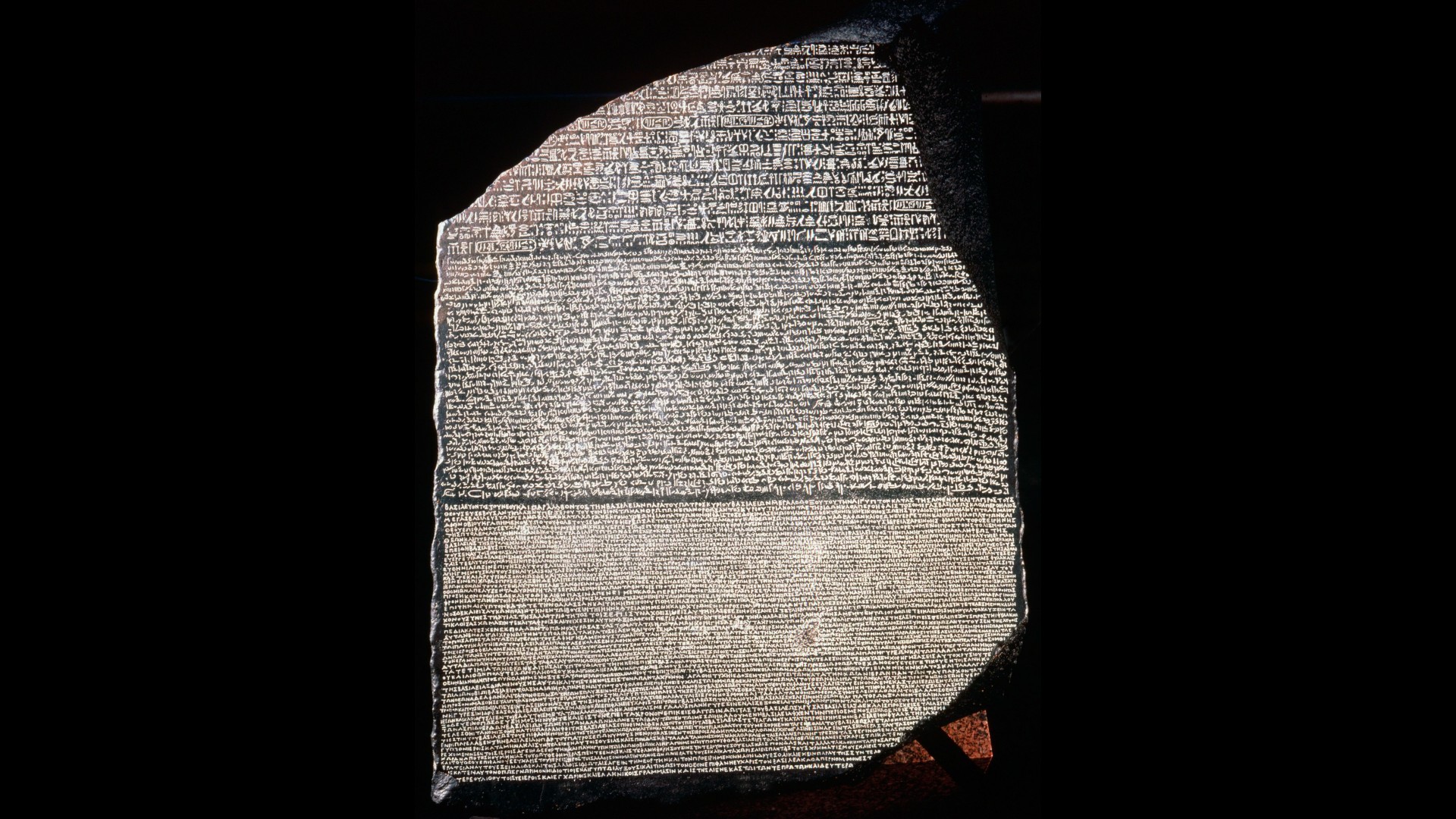Copyright livescience

Skip to main content Close main menu Live Science Sign up to our newsletter View Profile Search Live Science Planet Earth Archaeology Physics & Math Human Behavior Science news Life's Little Mysteries Science quizzes Newsletters Story archive Man regains vision by tooth to eye implant 5,000-year-old stone tomb in Spain Abandoning daylight saving time JWST discovers possible black hole star Million-year-old skull from China rewrites human origins Don't miss these Ancient Egyptians Massive blocks from the Lighthouse of Alexandria, an ancient wonder, hauled up from the Mediterranean Ancient Egyptians Ancient Egyptian rock art discovered near Aswan may be from the dawn of the first dynasty Ancient Egyptians 2,200-year-old gold coin depicting ancient Egyptian queen discovered in Jerusalem Archaeology Anthropologist claims hand positions on 1,300-year-old Maya altar have a deeper meaning Ancient Egyptians Oldest and most complete ancient Egyptian human genome ever sequenced reveals ties to Mesopotamia Ancient Egyptians 4,000-year-old handprint discovered on ancient Egyptian tomb offering Human Evolution 2.6 million-year-old stone tools reveal ancient human relatives were 'forward planning' 600,000 years earlier than thought Ancient Egyptians Sabu Disk: A mysterious 5,000-year-old Egyptian stone sculpture that looks like a hubcap Ancient Egyptians 3,300-year-old ancient Egyptian whistle was likely used by police officer tasked with guarding the 'sacred location' of the royal tomb 'Extraordinary' Roman helmet from war-ending battle found in the sea off Sicily Roman dodecahedron: A mysterious 12-sided object that has baffled archaeologists for centuries Ancient Egyptians 'Cleopatra's Final Secret' documentary reveals hundreds of coins and port found in Egypt. But does that mean Cleopatra was buried there? Archaeology Sticky goo in 2,500-year-old bronze jars finally identified, settling 70-year debate Archaeology 5,000-year-old stone tomb discovered in Spain is 43 feet long — and it holds many prehistoric burials Archaeology We know humans arose in Africa, but archaeology is only just uncovering secrets of the continent's early civilizations Archaeology Science history: Rosetta stone is deciphered, opening a window into ancient Egyptian civilization — Sept. 27, 1822 27 September 2025 On Sept. 27, 1822, French philologist Jean-François Champollion announced that he had deciphered ancient Egyptian hieroglyphics, using the Rosetta stone. This ushered in a new craze for Egyptology and helped us understand one of the world's longest-running civilizations. When you purchase through links on our site, we may earn an affiliate commission. Here’s how it works. The Rosetta Stone is one of the most important objects in history. The stone, which contains the same decree in ancient Greek, demotic and hieroglyphics, was the key to deciphering the latter two languages. (Image credit: Photos.com via Getty Images) QUICK FACTS Milestone: Rosetta stone deciphered Date: Sept. 27, 1822 Where: Paris Who: French philologist Jean-François Champollion On Sept. 27, 1822, French philologist Jean-François Champollion announced that he had deciphered the text on the Rosetta stone, opening a window into ancient Egyptian civilization. The stone had been discovered by French forces in 1799, during Napoleon's first foray into Egypt. The soldiers were building fortifications in the town of Rashid, which had been ancient Rosetta, when officer Pierre François Bouchard noticed the granite-like stone built into an old wall. The 44-inch-tall (112 centimeters), 1,680-pound (760 kilograms) slab of granodiorite was inscribed in Greek, hieroglyphics and demotic, a kind of cursive Egyptian script. Bouchard immediately realized its significance and surmised that the text was identical in all three languages. That meant the ancient Greek could potentially be used to decrypt the other two scripts, which had been indecipherable for centuries. You may like Massive blocks from the Lighthouse of Alexandria, an ancient wonder, hauled up from the Mediterranean Ancient Egyptian rock art discovered near Aswan may be from the dawn of the first dynasty 2,200-year-old gold coin depicting ancient Egyptian queen discovered in Jerusalem Ottoman and British forces defeated the French, and in 1801, the Rosetta stone was taken by the British as part of the Treaty of Alexandria and moved to the British Museum. Based on the Greek inscription, scholars quickly deduced that the text was a royal decree from 196 B.C. that was written in honor of boy king Ptolemy V Epiphanes on the first anniversary of his coronation. The aim of the decree was to assert the Macedonian Greek pharaoh's authority at a tumultuous time, soon after rebellion by the native Egyptians had roiled the Hellenistic hierarchy and the nearby Seleucid Empire had invaded parts of the western Mediterranean. The inscribed stone slab, or stela, pronounces that Ptolemy, "the god who maketh himself manifest," will fund temples and animal cults, increase priestly income, lighten the tax burden and pardon prisoners. In exchange, statues of him would be placed in all of the temples and priests would tend to those statues thrice daily. Similar stelae were placed throughout the country. By 1802, a Swedish diplomat had made progress in deciphering some of the words in demotic by relying on its similarity with Coptic, an Egyptian language that, like Latin, wasn't spoken but was still understood. Sign up for the Live Science daily newsletter now Get the world’s most fascinating discoveries delivered straight to your inbox. Contact me with news and offers from other Future brandsReceive email from us on behalf of our trusted partners or sponsorsBy submitting your information you agree to the Terms & Conditions and Privacy Policy and are aged 16 or over. Excerpts from Champollion's text showing how to decipher different hieroglyphs. (Image credit: Arterra via Getty Images) But it wasn't until 1819 that the key breakthroughs were made. British scholar Thomas Young published an article in the Encyclopedia Britannica in which he defined 218 demotic words and linked them to around 200 associated hieroglyphics. He also deciphered the phonetic hieroglyphs for the word "Ptolemy." However, he suspected only names and foreign words were likely to be phonetic and that other hieroglyphs were symbolic. When Champollion looked at Young's work, he disagreed. Hieroglyphs, he was convinced, were a decryptable alphabet. He systematically matched the ancient Greek and Coptic words against the hieroglyphs, slowly chipping away at the sounds. Lore has it that when he first realized he'd deciphered the whole text, he fainted for a week. Though that's likely a myth, soon after, he announced his discovery at the Académie des Inscriptions et Belles-Lettres in Paris, where rival Young would hear his discovery. The translation of the Rosetta stone essentially created the field of Egyptology and allowed scholars to understand the sophisticated civilization that emerged on the banks of the Nile more than 5,000 years ago and persisted for millennia. RELATED STORIES —Why does the Rosetta Stone have 3 kinds of writing? —When did the Egyptians start using hieroglyphs? —How do we decipher Egyptian hieroglyphics and other ancient languages? Thanks to the Rosetta stone, we have uncovered the elaborate rituals and religious beliefs that governed life and death in the Book of the Dead, have re-created the complex embalming recipes the ancient Egyptians used to mummify the dead, have a detailed picture of day-to-day life for royals and commoners alike, and have untangled the histories of dynasties that ruled for thousands of years. The Rosetta stone was taken as a spoil of war and is still housed at the British Museum, but it remains a central piece of Egypt's heritage. For many years, Egypt has called for the artifact to be returned to its homeland. Social Links Navigation Managing Editor Tia is the managing editor and was previously a senior writer for Live Science. Her work has appeared in Scientific American, Wired.com and other outlets. She holds a master's degree in bioengineering from the University of Washington, a graduate certificate in science writing from UC Santa Cruz and a bachelor's degree in mechanical engineering from the University of Texas at Austin. Tia was part of a team at the Milwaukee Journal Sentinel that published the Empty Cradles series on preterm births, which won multiple awards, including the 2012 Casey Medal for Meritorious Journalism. You must confirm your public display name before commenting Please logout and then login again, you will then be prompted to enter your display name. Massive blocks from the Lighthouse of Alexandria, an ancient wonder, hauled up from the Mediterranean Ancient Egyptian rock art discovered near Aswan may be from the dawn of the first dynasty 2,200-year-old gold coin depicting ancient Egyptian queen discovered in Jerusalem Anthropologist claims hand positions on 1,300-year-old Maya altar have a deeper meaning Oldest and most complete ancient Egyptian human genome ever sequenced reveals ties to Mesopotamia 4,000-year-old handprint discovered on ancient Egyptian tomb offering Latest in Archaeology 'Gold coins started appearing one after another': 1,400-year-old hoard with money and jewelry unearthed near Sea of Galilee Rare wampum beads discovered at 17th-century colony in Newfoundland 1 million-year-old skull from China holds clues to the origins of Neanderthals, Denisovans and humans 5,000-year-old stone tomb discovered in Spain is 43 feet long — and it holds many prehistoric burials 7-year-old Maya child had green jade 'tooth gem,' new study finds 'Cleopatra's Final Secret' documentary reveals hundreds of coins and port found in Egypt. But does that mean Cleopatra was buried there? Latest in Features Science history: Rosetta stone is deciphered, opening a window into ancient Egyptian civilization — Sept. 27, 1822 Science history: DART, humanity’s first-ever asteroid deflection mission, punches a space rock in the face — Sept. 26, 2022 Doctors restore a man's vision by removing his tooth and implanting it in his eye Why does medicine taste bad? Cairo Fossil Forest: The oldest forest in North America with 385 million-year-old trees Paralvinella hessleri: The yellow worm that lives in acid and fights poison with poison LATEST ARTICLES Scientists asked ChatGPT to solve a math problem from more than 2,000 years ago — how it answered it surprised them Science news this week: A breakthrough cure for Huntington's disease and a fast-growing black hole that breaks physics It's official: Humans have found 6,000 planets beyond our solar system Why does medicine taste bad? Is acetaminophen safe in pregnancy? Here's what the science says. Live Science is part of Future US Inc, an international media group and leading digital publisher. Visit our corporate site. Contact Future's experts Terms and conditions Privacy policy Cookies policy Accessibility Statement Advertise with us Web notifications Editorial standards How to pitch a story to us Future US, Inc. Full 7th Floor, 130 West 42nd Street, Please login or signup to comment Please wait...



